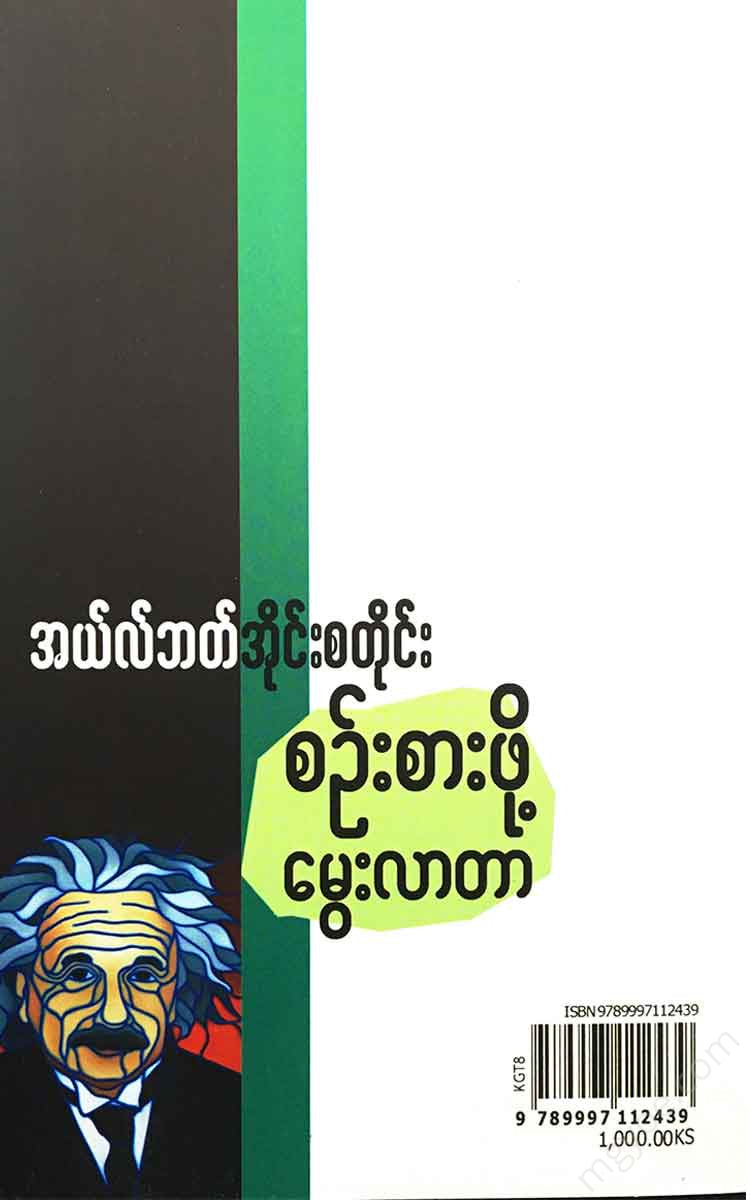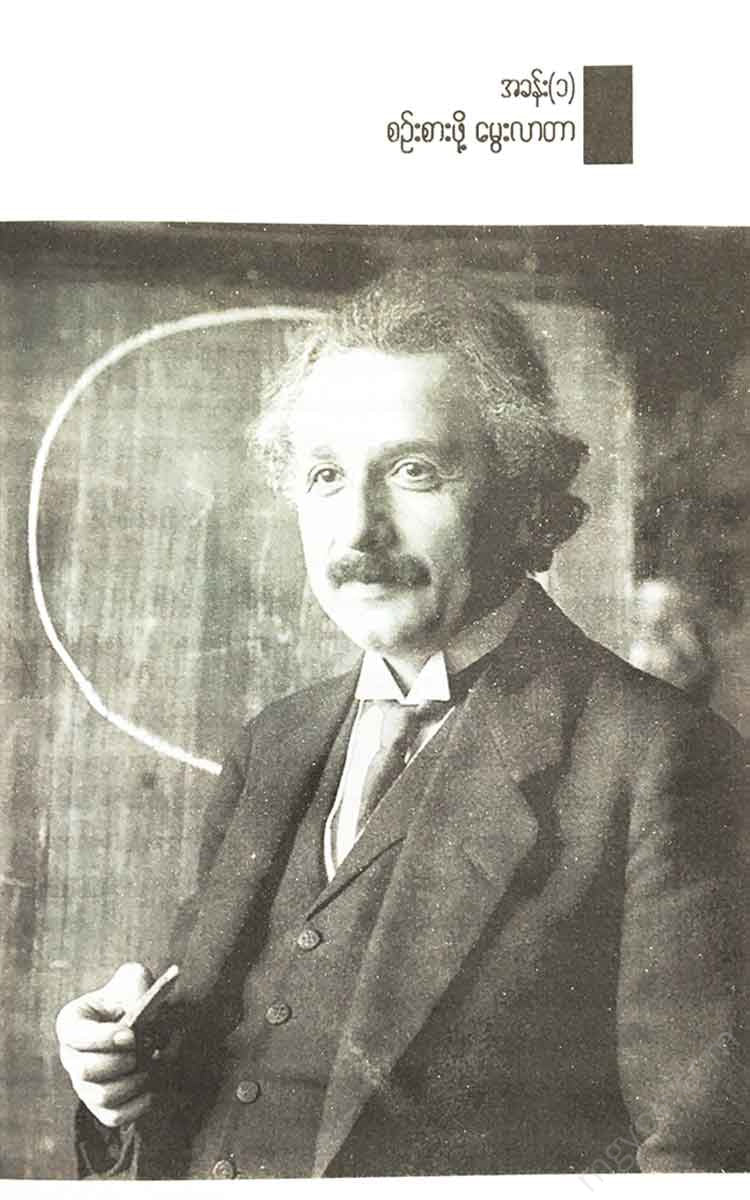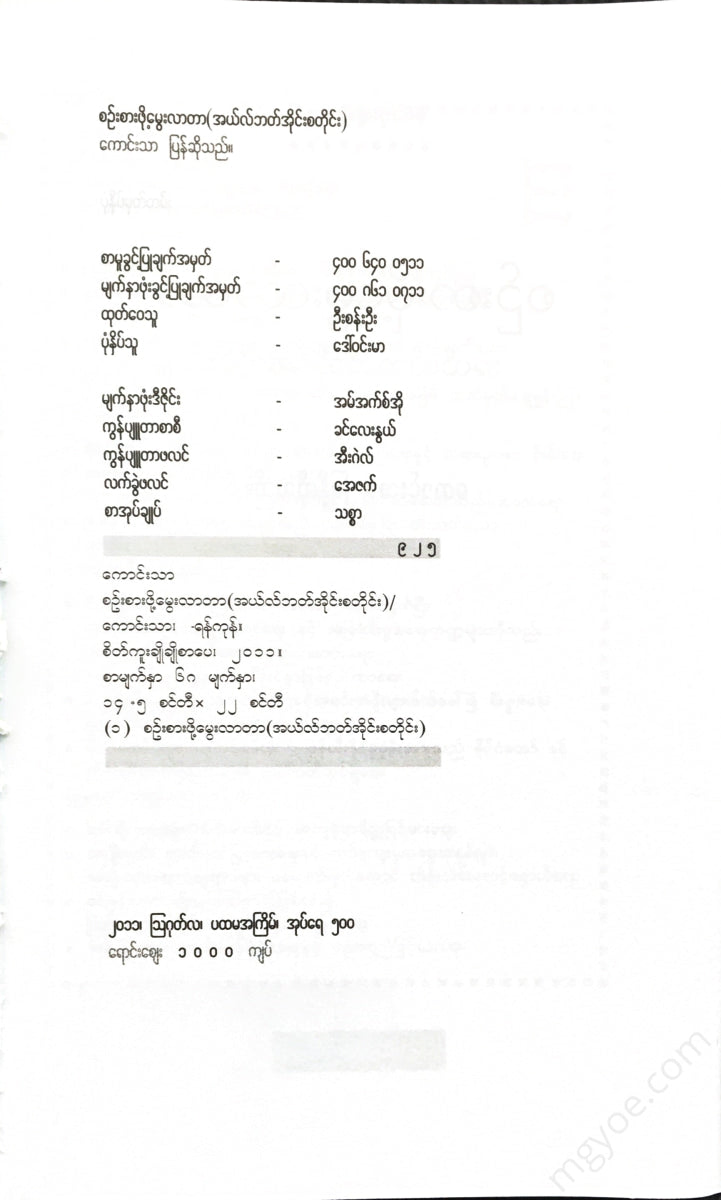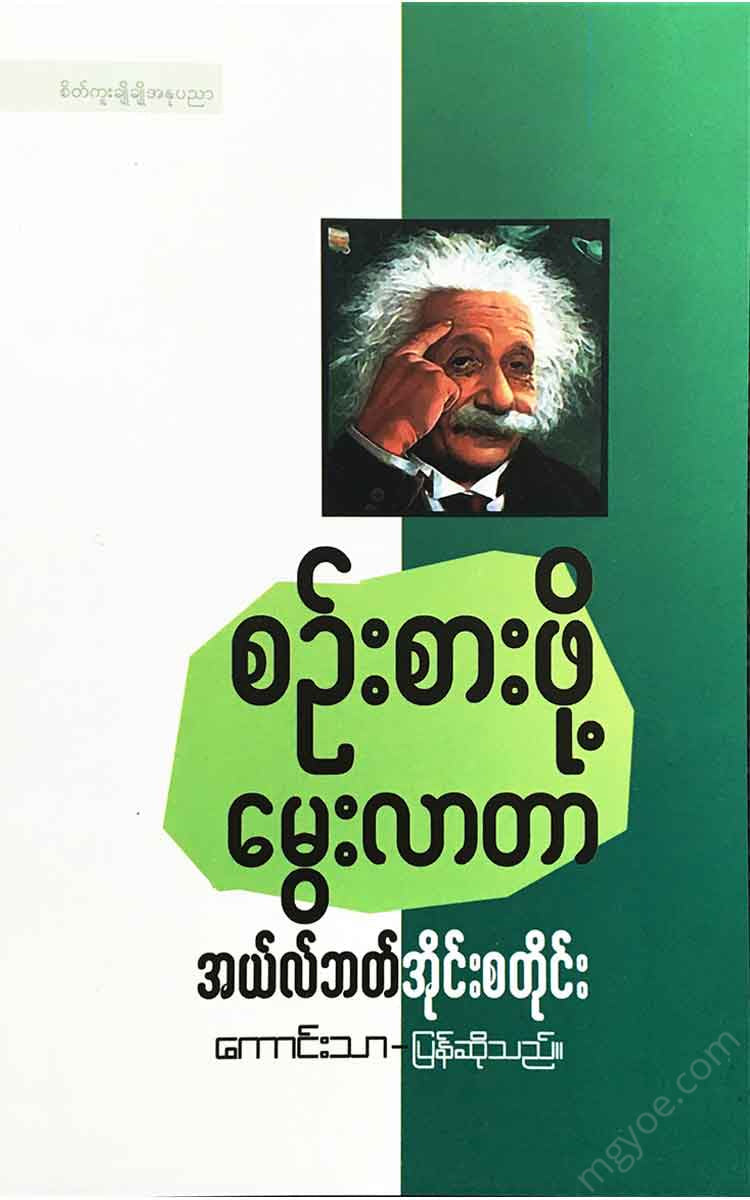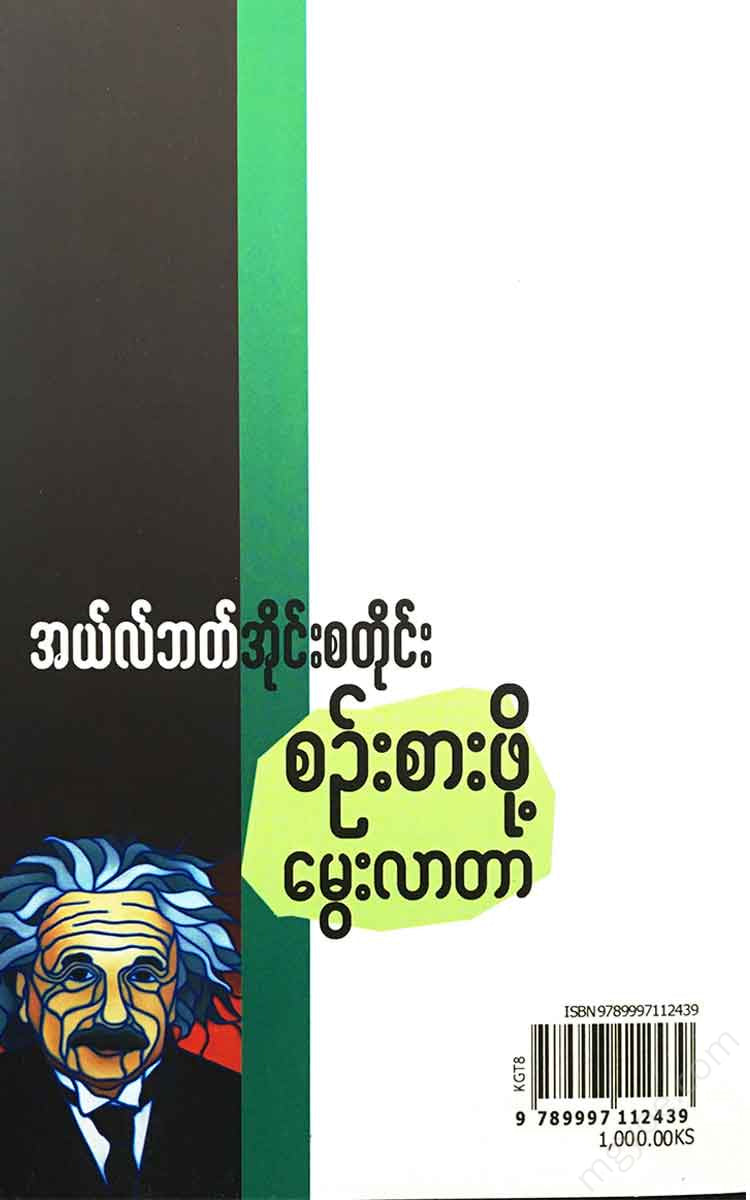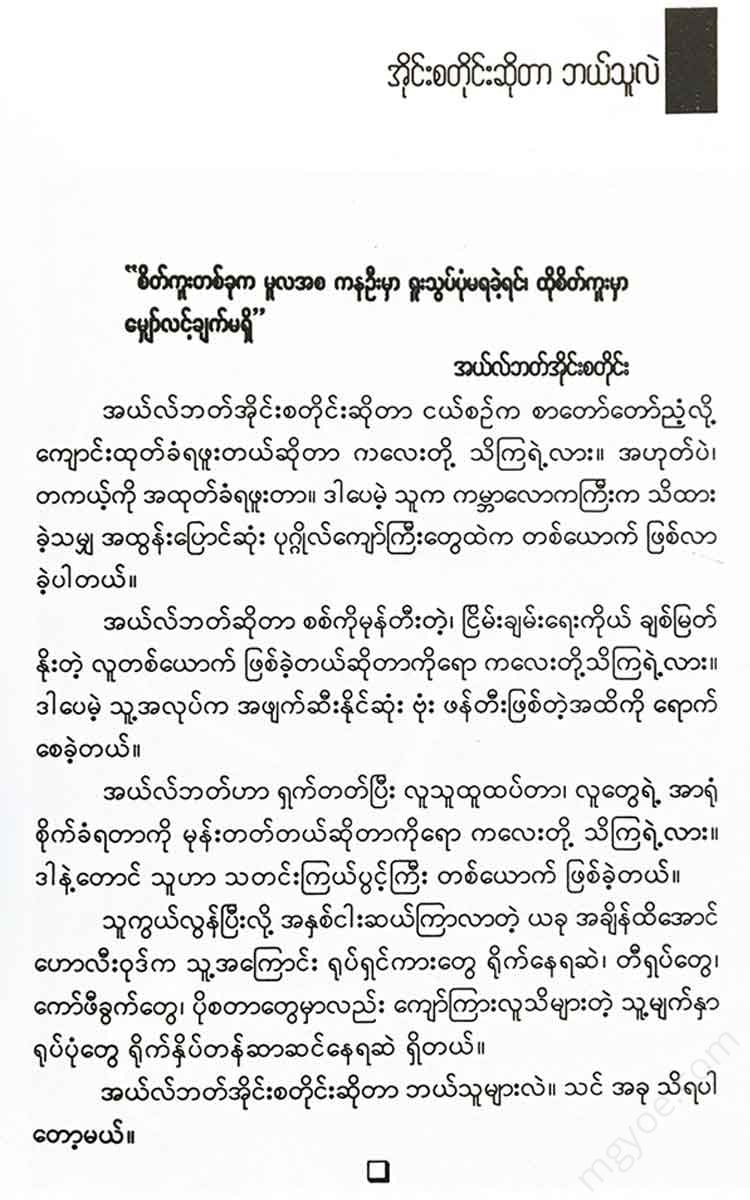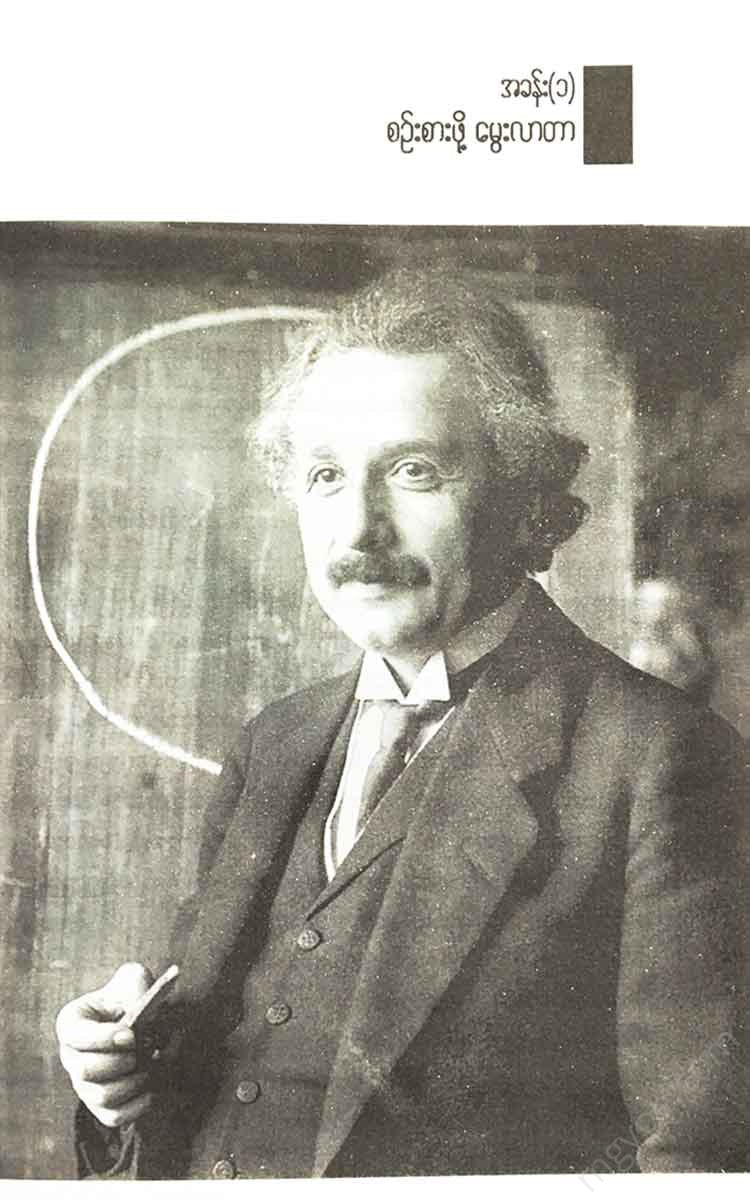စိတ်ကူးချိုချိုစာပေ
Good - Born to think
Good - Born to think
Couldn't load pickup availability
“ There are only two ways to live your life. One is to live as if nothing is a miracle. The other is to live as if everything is a miracle.”
Albert Einstein
Albert Einstein was born on March 14, 1879, in the German city of Ann. He certainly didn't look like an ordinary child. He had thick, dark hair and a chubby, white face. He was a quiet, shy, and timid child, and his parents were worried that something was wrong with him. So they took him to the doctors. "The child doesn't speak," they explained. The doctors examined him and found nothing wrong with him.
And so the story goes. Albert didn't say a word until he was three or four years old. Then one night, while eating dinner, he suddenly started talking, "Isn't that soup hot?" His parents, greatly relieved, asked him why he had been silent and silent, and he replied, "The reason he's been silent is because he's always pretending." I don't know if this story is true or not. There is no evidence.
Most boys his age played soldier games. They played rough and tumble games. Albert didn't. Seeing real, lifeless, robotic soldiers marching by with dead faces made Albert afraid of soldiers. Albert preferred to be alone and daydream. His favorite games were building houses with blocks and playing cards. The card towers he built were sometimes fourteen stories high.
The parents became increasingly concerned about their son, who was often alone, quiet, and withdrawn. They took him to the doctors and had him examined. “There must be something wrong with his brain.” The doctors, who examined him again, found no signs of illness in the boy. He was back to his normal self. He was quiet, calm, and thoughtful, a thinker.
| Albert's father and uncle had a business selling batteries, generators, and wires. Electricity captivated Albert's attention. Electricity was an invisible force that could be dangerous. Electricity was like some mysterious secret. Albert asked his father and uncle a series of questions that made him dizzy. How fast does electricity travel? Is there a way to see electricity? What is it made of? If electricity is not the only thing in the universe, what other mysterious forces could there be?
Albert liked to think about the invisible and inexplicable world, rather than the visible and explainable. He later said the following:
“Imagination is more important than knowledge. Knowledge is limited. Imagination encompasses the world.”
Albert was also fascinated by a compass his father had given him. No matter how he held it, the compass needle always pointed in the same direction. North. He looked at the compass upside down. He looked at it sideways. He looked at it in the dark. How could he do it? The compass needle always pointed in the same direction. Albert couldn't figure out why. His father explained that the Earth was like a giant magnet, and that the small needle in the compass was always attracted by the Earth's magnetic field. Albert was amazed to know that there was some strange and powerful force all around him. He couldn't see it, he couldn't touch it, but it was there. The compass was showing.
Albert had more to think about. He wasn't taught about the things that were important to him in school. So at the age of 10, he started educating himself. He read as much as he could about science.
"Magnetic World"
Magnets are invisible forces. Every magnet has two ends. One is called the “north pole,” and the other is called the “south pole.” The north pole of one magnet attracts the south pole of another magnet. The opposite poles are drawn closer together, so they stick together so they can’t be separated. If you try to put poles together, north with north, or south with south, they don’t stick together and instead repel.
There are iron bars at the center of the Earth. These bars emit magnetic fields. The Earth itself has a north pole (near the North Pole) and a south pole (near the South Pole). A compass needle is a magnet. One end of the needle points to the Earth's north pole, and the other end points to the Earth's south pole. The tip of the needle always points north.
Albert also loved to play the violin. Music calmed his restless mind. He especially enjoyed playing the violin with his mother. His mother accompanied him on the piano. One day, while playing together, Albert suddenly realized that musical symbols were like numbers, pairs of numbers, and squares. The high and low notes of music were like counting numbers into groups of threes, fours, and eights. “Music is like numbers,” he told his mother. (Albert often found himself lost in thought even during his breaks.)
Later, when Albert became famous and traveled around the world, he always took only two things with him: his small suitcase and his violin.
When Albert was one year old, his family moved to Munich, Germany. There, his sister, “Maja,” was born. Albert had thought his little sister would become a toy. But when “Maja” didn’t come with wheels like most toys, he asked his parents, “Where did the wheels go?” It was clear that he was very disappointed with the little boy.
However, the little girl without wheels, Maja, soon became Albert's best friend. As the two siblings grew up, they would go on long hikes together, climbing mountains. Their cousins often joined them. The higher they climbed, the better Albert could think. This thought would take him up the mountain using his compass, and he would think about how mysterious the world was. Lying on his back on the grass, he would look up at the sky and wonder about the universe. Is there anything further away than space? Is there a place like that?
How fast would you go? How much did the light from those stars have to travel all the way to your eyes? How far does space go? Can you ride a beam of light? Is there something bigger than the universe?
Albert seemed born to think. His father and uncle helped guide him in his thinking. His sister and cousins encouraged his intellectual journey. Albert found books that helped him solve math and science problems. His mother also introduced him to music. Music connected his mind in a way that books could not. While some children dream of becoming a mechanic or a veterinarian, Albert set his sights on becoming a thinker.

